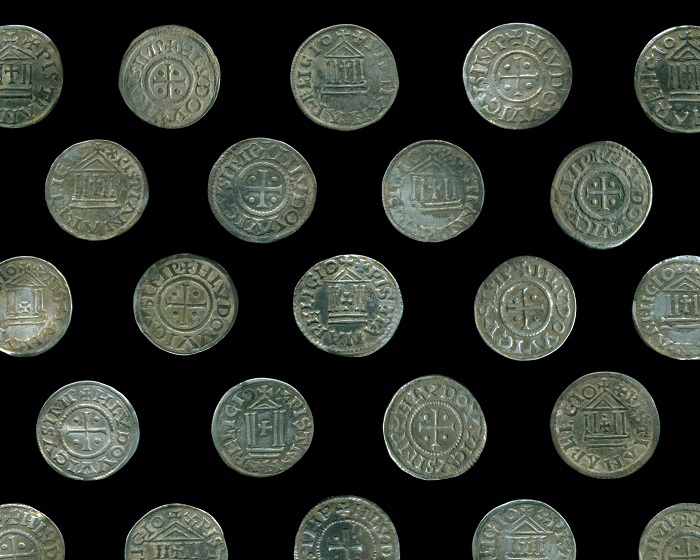Thirteen French coins minted during the Carolingian dynasty have been unearthed in northern Poland. They enlarge a collection – amounting now to 131 coins – found this year at the same spot after being first discovered by amateur detectorists.
The collection is the first trove of Carolingian coins discovered in Poland, according to experts. Speculation remains over how it ended up at its current location, with one theory being that the coins were part of a ransom paid to the Vikings to end the siege of Paris in 845.
The discovery in a Polish village of coins minted over 1,100 years ago in what is now France has baffled experts.
One theory is that they were part of a ransom paid to the Vikings to prevent them from destroying Paris in 845 https://t.co/A42vdIGydR
— Notes from Poland 🇵🇱 (@notesfrompoland) July 13, 2021
The first traces of the treasure were found in November last year in Warmia-Masuria province, near the town of Biskupiec, but were kept secret until official excavations confirmed the hopes.
Originally, it was a group of amateur local history enthusiasts from the GRYF Biskupiec Detectorist Association who came across the trove during a search with metal detectors.
“The weather conditions were very bad that day, it was snowing and when we were finishing our search, already on the way to the car, I found a coin and just put it in my pocket,” recalled Przemysław Witkowski, a member of the association, speaking to TVP.
Later, he started to look for information on his finds, but with nothing available on such treasures in Poland, it was only an archaeologist from Ostróda Museum, Łukasz Szczepański, who was able to make him aware of the significance of the treasure he had found.
Szczepański says that no trove of early medieval French denarii has ever before been found in Poland. Previously only single coins from this period minted in Western Europe have been discovered on Polish territory.
When archaeological excavations started at the spot, the first batch of coins was unearthed in May. It consisted of 118 early medieval silver denarii – numerous intact but some in scraps – reports the Polish Press Agency (PAP).
They date back to the ninth century and were minted at the time of emperor Louis the Pious, son of Charlemagne, and his successor Charles the Bald. Now, during the second phase of the excavations, a further 13 silver coins were discovered, bringing the total to 131.
The coins were scattered around a field of corn, which, according to Szczepański, indicates that they were probably moved around during ploughing. Experts believe that, since no settlements or cemeteries have been found in this area, the money was probably hidden in what was then a thick forest.
The trove was initially handed over to the Museum in Ostróda and is now under examination by the Polish Academy of Sciences.
How the early medieval French coins ended up in this part of Europe remains a mystery. “The existence of the Truso settlement [in what is now Poland] and the related Viking activity is currently the most probable lead that would explain how the treasure came [here],” explains Szczepański.
Main image credit: Muzeum w Ostródzie

Agnieszka Wądołowska is deputy editor-in-chief of Notes from Poland. She is a member of the European Press Prize’s preparatory committee. She was 2022 Fellow at the Entrepreneurial Journalism Creators Program at City University of New York. In 2024, she graduated from the Advanced Leadership Programme for Top Talents at the Center for Leadership. She has previously contributed to Gazeta Wyborcza, Wysokie Obcasy and Duży Format.




















